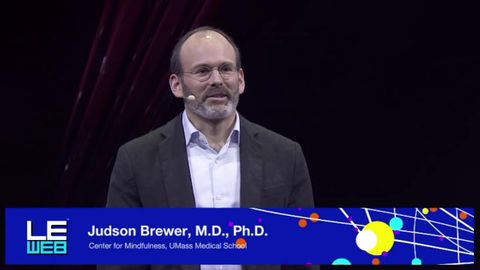
Subtitles & vocabulary
Mindfulness, the Mind, and Addictive Behavior - Judson Brewer
00
River posted on 2016/05/06Save
Video vocabulary
experience
US /ɪkˈspɪriəns/
・
UK /ɪk'spɪərɪəns/
- Countable Noun
- Thing a person has done or that happened to them
- An event at which you learned something
- Noun (Countable/Uncountable)
- Knowledge gained by living life, doing new things
- Previous work in a particular field.
A1TOEIC
More people
US /ˈpipəl/
・
UK /'pi:pl/
- Noun (Countable/Uncountable)
- Persons sharing culture, country, background, etc.
- Men, Women, Children
- Transitive Verb
- To populate; to fill with people.
A1
More brain
US /bren/
・
UK /breɪn/
- Transitive Verb
- To strike someone forcefully on the head
- Noun (Countable/Uncountable)
- The part of the head that thinks
- A smart person who often makes good decisions
A1
More meditation
US /ˌmɛdɪˈteʃən/
・
UK /ˌmedɪ'teɪʃn/
- Noun (Countable/Uncountable)
- Act of deep and quiet thinking
- The practice of focusing one's mind for a period of time.
B2
More Use Energy
Unlock All Vocabulary
Unlock pronunciation, explanations, and filters
